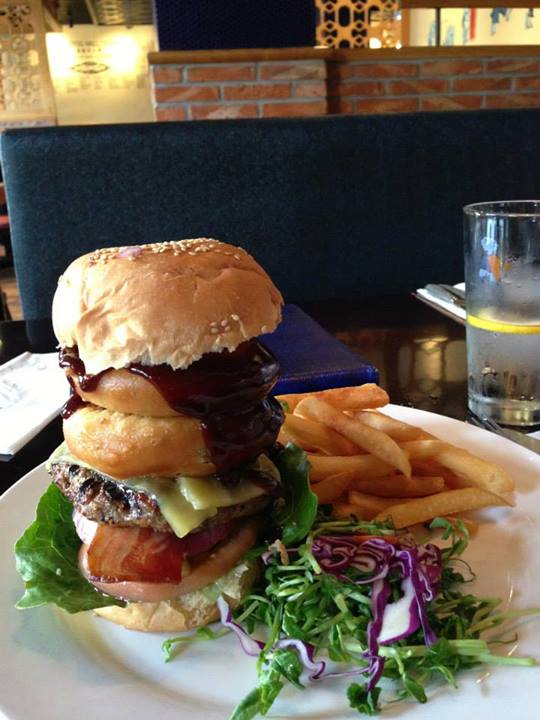Since the age of two, I have lived in seven different cities around the world and attended more schools than I could remember, even a few dreaded boarding schools. At the moment, my family moves around often five different cities as a result of my Dad’s work. Because I have been in different international schools since the age of ten, there has not been a city I have traveled to that I did not have the pleasure of a friend to see, or to pick me up from the airport. Strictly speaking, my best friends, or social groups, are not associated with home. My sense of home comes from experiences such biting into the Montana Burger at Shanghai’s Blue Frog Restaurant, driving by the calm and familiar roads of Burnaby, or hearing Asian languages in many public places of Richmond BC. Since these senses of home are not always available to me, I naturally connect to more available senses of home.
I connect to different franchise stores that give me a sense of home. I recall being very disappointed during my first visit to McDonalds in China, and very thrilled when Cold Stone opened in Vancouver. Since I was a young child, I have been eating a lot of McDonalds’ fast food. When the menu was different in China, and when the fries tasted different, my desperation for the familiarity, consistency, and comfort of the fast food franchise, turned into disappointment. Cold Stone Creamery, an ice cream shop, has been a family and friend hang out place for me since I was ten years old. The only other place I have ever seen, and frequently visited a Cold Stone, is in Shanghai. There they would sing the Cold Stone song, while they made customer’s order; enjoying cake batter ice cream at Cold Stone Creamery meant home in Shanghai to me. Now that Cold Stone is in Vancouver; that is no longer the case. Franchises are so important to my senses of cities and homes that ordering different meals at McDonalds, as a result of the pricing and menus, will always remind me exactly where I am. For example, if I were to order Chicken Wings at a McDonald’s store, I would be in Hong Kong. In Vancouver, I always order as little as possible, since it is relatively expensive there. In the United States, I would always order as much as possible, since it is relatively inexpensive. However, if I were in the American state of California, I would never be in McDonalds’, since I would only be at the In-N-Out fast food chain. I may be mistaken about some franchise facts, but because of this, the casual thoughts in my head about franchises only become even more intimate, in connecting myself to certain places in the world that I have been to. I spent five years of my childhood in Burnaby, and I always thought Arby’s fast food restaurants only existed in Burnaby. Whenever I am in the area, I would go feast out on hamburgers and curly fries in Burnaby to remind myself of my childhood. I live in Waterloo now, and recently been in a car crash. The auto shop repairing my car has an Arby’s right across from it. Now Arby’s remind me of both my carefree childhood and my tougher young adulthood.
To me, the physical home refers to a place for sleeping, showering, and making meals. The physical home can be anywhere, and yet, it never gives me the sense of home. What is home without the smell of my mother’s cooking or the sounds of my little brothers playing? To me, consistency defines the feeling or sense of home. Not too long ago, I was the type of person who would be a frequent visitor to big clubs. Now that I think about it, to me, loud music and red bull vodkas are consistent all around the world, more consistent in giving me the sense of home than a physical home. For this reason, instead of cuddling up in a comfortable bed, making my way to the clubs would be the first thing I used to do after arriving at any city. This is my fifth week in Waterloo, Ontario. Home in Waterloo means roommates, bedbugs, packed belongings, and the cold. I am no longer in a city due to coincidences, but as a result of a conscious decision. Every day I work, and build new life experiences without turning to my past senses of home. I hope to discover a new sense of home here, which would not be unique to the city, but unique to myself.
Lopez, J. Kenji. “Serious Eats – Seriouseats.com.” Serious Eats. N.p., 2 Mar. 2011. Web. 13 Feb. 2014.
MacDonald-Carlson, Helen. “Developing a Sense of Place: Exploring Ideas of Home and Community.” Canadian Children Child Study (n.d.): n. pag. Web.
Su, Calvin. “Blue Frog’s Montana Burger in Shanghai.” 2013. Jpg
